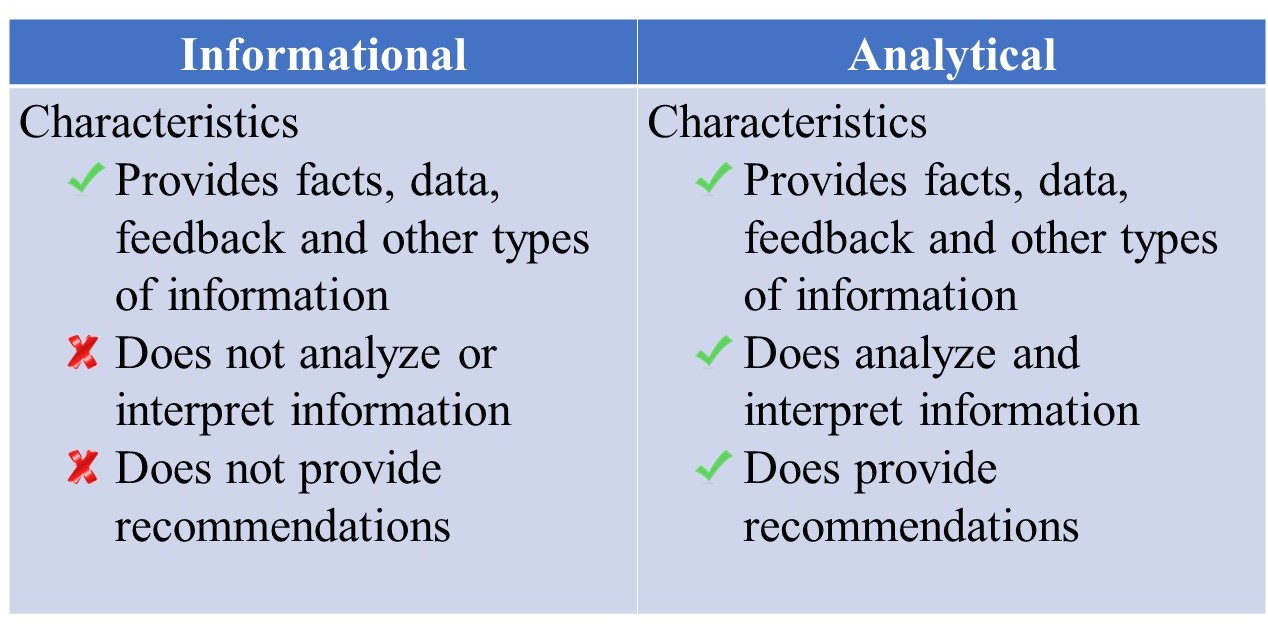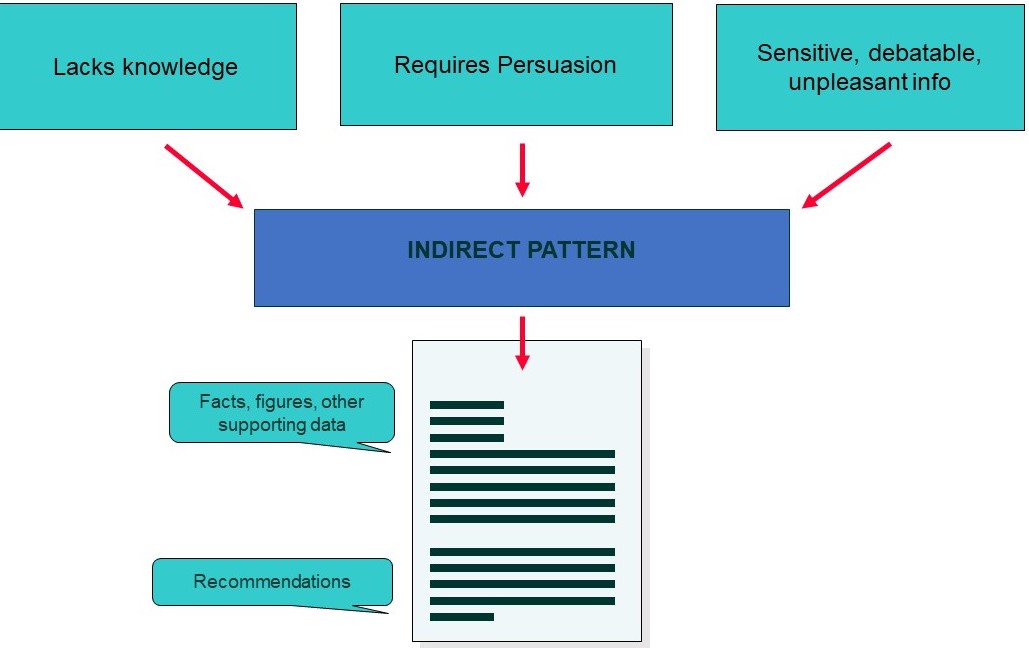Unit 22: Reports
Learning Objectives
1. Understand the purpose of reports and report organization.
2. Identify different types of reports.
3. Identify the parts and contents of reports.
 A vital part of any business or organization, reports document specific information for specific audiences, goals, or functions. The type of report is often identified by its primary purpose or function, as in an accident report, a laboratory report, a sales report, or even a book report.
A vital part of any business or organization, reports document specific information for specific audiences, goals, or functions. The type of report is often identified by its primary purpose or function, as in an accident report, a laboratory report, a sales report, or even a book report.
Reports are often analytical but sometimes just “report the facts” with no analysis at all. Other reports summarize past events, present current data, and forecast future trends. While a report may have conclusions, propositions, or even calls to action, presenting analysis is the primary function. A sales report, for example, is not designed to make an individual sale. It is, however, supposed to report sales to date and may forecast future sales based on previous trends (Business Communication for Success, 2015).
Table 22.1 Excerpt: Report Pros, Cons, and Proper Use
| Channel | Advantages | Disadvantages | Expectations | Appropriate Use |
|---|---|---|---|---|
| Report |
|
|
|
|
INFORMATIONAL AND ANALYTICAL REPORTS
Reports come in all shapes and sizes—from a couple of soft-copy pages shared electronically to a book-sized binder. The type of report depends on its function as expressed in the purpose statement. The function also influences the writing style and other elements such as visual content (figures) and presentation of numerical values. Reports also vary by style and tradition. Regardless of their specific function or type, however, there are two main categories of reports: informational and analytical.
Informational reports provide facts, data, feedback, and other types of information to assist management to make decisions. Informational reports do not provide an analysis or interpretation of information and do not provide recommendations. An example of this type of “just the facts” report is a police accident report. The report will note the time, date, place, contributing factors like weather, and identification information for the drivers involved in an automobile accident. It does not establish fault or include judgmental statements. You should not see “Driver was falling down drunk” in a police accident report. Instead, you would see “Driver failed sobriety tests and breathalyzer test and was transported to the station for a blood sample.” The police officer is not a trained medical doctor licensed to make definitive diagnoses, but can collect and present relevant information that may contribute to a diagnosis.
Analytical reports provides facts, data, feedback and other types of information, but they also provide analysis, interpretation, and recommendations. For instance, a field report by a Public Health Agency of Canada physician from the site of an outbreak of the H1N1 virus will note symptoms, disease progression, and steps taken to arrest the spread of the disease. It will ultimately make recommendations on the treatment and quarantine of subjects. Figure 22.1 below includes common reports that, depending on the audience needs, may be informational or analytical (Business Communication for Success, 2015; Business Communication Essentials, 2016)
Report Characteristics

Analytical and Information Report Purpose
Each report purpose is best suited for specific types of report. Figure 22.2 below provides an overview of the most appropriate business situations to use an informational or analytical report.
Figure 22.2 Informational and Analytical Reports

REPORT ORGANIZATION
Because reports vary by size, format, and function, writing them involves adjusting to the needs of the audience while respecting conventions and guidelines. Reports are typically organized around six key elements, the 5Ws + H:
- Whom the report is about and/or prepared for
- What was done, what problems were addressed, and the results, including conclusions and/or recommendations
- Where the subject studied occurred
- When the subject studied occurred
- Why the report was written (function), including under what authority, for what reason, or by whose request
- How the subject operated, functioned, or was used
Pay attention to these essential elements when you consider your stakeholders, or those who have an interest in the report. That may include the person(s) the report is about, whom it is for, and the larger audience of the business, organization, or industry. Ask yourself who are the key decision makers reading the report, who the experts or technicians will be, and how executives and workers may interpret your words and images. (Business Communication for Success, 2015)
Direct vs Indirect Organization Pattern
The audience, purpose and content of a report will influence the report’s organizing pattern: direct or indirect.
Direct Pattern: Direct reports contain routine, nonsensitive information. Reports using this organizing pattern will present the most important findings first followed by facts, data and other explanatory details. Thus, the direct approach is most appropriate for informational reports. In addition, when the receiver is likely to be in agreement with and accepting of the report’s information and recommendations, the direct approach can also be applied to analytical reports. This approach allows the receiver to access relevant information in a quick, efficient and easy to follow manner.
The Direct Approach


Indirect Pattern: An indirect approach may contain sensitive, controversial, debated or unpleasant information. As a consequence, not all readers will be knowledgeable of, in agreement with, or accepting of the information and/or recommendations made in the report. For this reason, the indirect approach is used when the audience must be educated about or persuaded of the credibility of the information presented and merits of the recommendations made. An indirect report presents the facts, data and other explanatory details before presenting its conclusions and recommendations. Since only analytical reports present recommendations, the indirect approach is used exclusively with analytical reports. (Business Communication Essentials, 2016; Communicating for Results, 2017)
The Indirect Approach


Information Organization Methods

REPORT TYPES AND FUNCTION: INFORMAL REPORTS
Depending on the complexity and depth of content, reports are categorized as either informal or formal. Whatever the type, all reports provide the information that people in an organization need to solve problems and make plans.
Informal Reports:

The informal report is 10 pages or under, and for this reason, informal reports are also referred to as short reports. Informal reports can have both an internal and external audience, but are mostly written for an internal audience. For internal audiences, the informal report is constructed as a memo or email report; for the external audience, the informal report is constructed as a letter or email report.
In addition, the informal report can be informational or analytical in nature. The informational report contains non-sensitive, routine information, often presented in a prescribed format such as a fill-in-the-blank form. For this reason, the sections of an informational report include the introduction, findings, and conclusion. In contrast, the short analytical report seeks to answer questions about specific problems with the aim of solving those problems. How can we use social media more effectively? Should we close or open a new plant? How can customer service be improved? Therefore, the short analytical report not only includes an introduction, findings, and conclusion, but also recommendations.
Table 22.2 Informational and Analytical Report Sections
Informational Reports
|
Analytical Reports
|

Labels and Section Headers: Although the informal report is short, any document that is two pages or longer should include a feature that helps to separate information into unique sections. Utilizing headers for any report in excess of 2-pages creates a better organized report and assist readers to understand, locate, and retain information (Business Communication: Process and Product, 2016; Communicating for Results, 2017; Successful Business Communication, 2016).
Headers and Information Organization

The following is a 14-point checklist for helping to ensure that a report fulfills its goals:
◻ 1. Report considers the audience’s needs
◻ 2. Format follows function of report
◻ 3. Format reflects institutional conventions and expectations
◻ 4. Information is accurate, complete, and documented
◻ 5. Information is easy to read
◻ 6. Terms are clearly defined
◻ 7. Figures, tables, and graphic elements support written content
◻ 8. Figures, tables, and graphic elements are clear and correctly labeled
◻ 9. Figures, tables, and graphic elements are easily understood without text support
◻ 10. Words are easy to read (font, arrangement, organization)
◻ 11. Results are clear and concise
◻ 12. Recommendations are reasonable and well-supported
◻ 13. Report represents your best effort
◻ 14. Report speaks for itself without your clarification or explanation
(Business Communication for Success, 2015, 9.4)
References
Bovee, C., Thill, J., & Scribner, J. (2016). Business communication essentials (4th ed.). Toronto, ON: Pearson Canada Inc. Retrieved from http://www.pearsoncanada.ca/highered/product-showcase/new-solutions-for-core-foundations-from-pearson-canada/business-communication-essentials-fourth-canadian-edition-4e
Cember, E., Heavilon, A., Seip, M., Shi, L., & Brizee, A. (2018, March 23). Handbook on report formats. Purdue OWL. Retrieved from https://owl.english.purdue.edu/owl/resource/726/1/
Driscoll, D. L. (2013, March 12). Writing report abstracts. Purdue OWL. Retrieved from https://owl.english.purdue.edu/owl/resource/656/1/
Guffey, M., Loewry, D., Rhodes, K., Rogin, P. (2016). Business communication: Process and product (5th ed.). Toronto, ON: Nelson Education. Retrieved from http://www.cengage.com/cgi-wadsworth/course_products_wp.pl?fid=M20b&product_isbn_issn=9780176531393&template=NELSON
Lumen (n.d.). Informal reports. Business communications skills for managers. Retrieved January 12, 2020 from https://courses.lumenlearning.com/wmopen-businesscommunicationmgrs/chapter/informal-reports/
Meyer, C. (2017). Communicating for results (4th ed.). Don Mills, ON: Oxford University Press. Retrieved from https://oup-arc.com/access/meyer-4e-student-resources#tag_case-studies
Microsoft Office. (2014, December 14). Papers and Reports. Templates. Retrieved from https://templates.office.com/en-us/Papers-and-Reports
Purdue OWL. (2010, April 29). Reports, proposals, and technical papers [PowerPoint File]. Retrieved fromhttps://owl.english.purdue.edu/owl/resource/656/02/
Techwriter. (2010, September 24). How to write a transmittal or cover letter. Technical Communication Centre. Retrieved from https://www.technicalcommunicationcenter.com/2010/09/24/how-to-write-a-transmittal-or-cover-letter/

